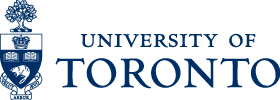Exploiting Problem Structure in QBF Solving
Advisor:
Bacchus, Fahiem
Department:
Computer Science
Issue Date:
27-Mar-2014
Abstract (summary):
Deciding the truth of a Quantified Boolean Formula (QBF) is a canonical PSPACE-complete problem. It provides a powerful framework for encoding problems that lie in PSPACE. These include many problems in automatic verification, and problems with discrete uncertainty or non-determinism. Two person adversarial games are another type of problem that are naturally encoded in QBF.
It is standard practice to use Conjunctive Normal Form (CNF) when representing QBFs. Any propositional formula can be efficiently translated to CNF via the addition of new variables, and solvers can be implemented more efficiently due to the structural simplicity of CNF. However, the translation to CNF involves a loss of some structural information. This thesis shows that this structural information is important for efficient QBF solving, and shows how this structural information can be utilized to improve state-of-the-art QBF solving.
First, a non-CNF circuit-based solver is presented. It makes use of information not present in CNF to improve its performance. We present techniques that allow it to exploit the duality between solutions and conflicts that is lost when working with CNF. This duality can also be utilized in the production of certificates, allowing both true and false formulas to have easy-to-verify certificates of the same form.
Then, it is shown that most modern CNF-based solvers can benefit from the additional information derived from duality using only minor modifications. Furthermore, even partial duality information can be helpful. We show that for standard methods for conversion to CNF, some of the required information can be reconstructed from the CNF and greatly benefit the solver.
Permanent Link:
https://hdl.handle.net/1807/44111
Content Type:
Thesis
Items in TSpace are protected by copyright, with all rights reserved, unless otherwise indicated.
link to htmlmap